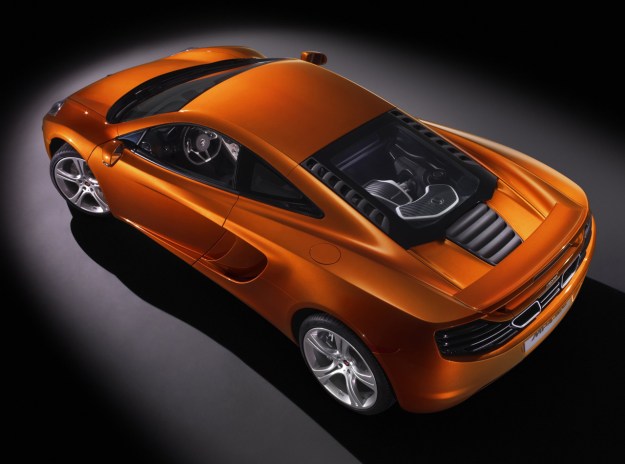 McLaren is working on a cheaper addition to its lineup, but don’t trade your Camry in just yet.
McLaren is working on a cheaper addition to its lineup, but don’t trade your Camry in just yet.
The British carmaker’s third model, codenamed P13, will cost around $200,000 and compete with the Porsche 911 Turbo.
McLaren boss Ron Dennis told England’s Autocar that the P13 will slot below the spendier and speedier MP4-12C, and will make up most of the company’s sales volume. It’s expected to go on sale in 2015, and McLaren hopes to move 2,500 copies per year.
The phrase “built to a price” is usually code for “bad,” but P13 buyers won’t have to have to sacrifice much.
The P13 will be based on the carbon fiber MonoCell chassis from the MP4-12C. McLaren designed the MonoCell to be used on smaller model, so giving the P13 a carbon fiber backbone won’t be prohibitively expensive.
As with the 12C, the MonoCell will also be strong enough to form the basis for a P13 coupe and convertible.
The mini-12C design will continue with the engine. The P13 will have the same 3.8-liter V8 as its big brother, also mounted in the middle. However, the V8 will be detuned to 450 horsepower, so as not to overshadow the 616 hp 12C.
Despite borrowing heavily from the 12C in the mechanical department, the P13 will reportedly look like McLaren’s 903 hp P1 hybrid hypercar. Of the two, the P1 is definitely more charismatic, so that’s probably for the better.

McLaren reckons the 911 Turbo is the only true sports car in its price range, which is mostly populated by cushier GT cars like the Bentley Continental. Since the Turbo is at (or near) the top of the 911 range, while the P13 will be a scaled-down 12C, it will be interesting to see how the two meet in the middle.
For buyers who can spend no more than $200,000 on a sports car, the 911 Turbo isn’t really a penalty box. Neither, for that matter, is the equally expensive Audi R8 GT. Still, a car with the driving dynamics of the MP4-12C and the styling of the P1, all in a nice tidy package, sounds pretty appealing.
What do you think? Smart move by McLaren? Tell us in the comments.


